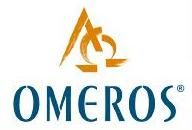– Decreases Craving and Anxiety in Heroin-Dependent Patients –
SEATTLE--(BUSINESS WIRE)--Nov. 2, 2016-- Omeros Corporation (NASDAQ: OMER) today announced positive results from a Phase 2 clinical trial evaluating the effects of a peroxisome proliferator-activated receptor (PPAR)-gamma agonist in heroin-dependent subjects. The trial was designed and conducted by Dr. Sandra Comer and her colleagues at the Division on Substance Abuse, New York State Psychiatric Institute and Department of Psychiatry, Columbia University. The clinical trial demonstrated that the compound statistically significantly reduced drug craving and measures of anxiety in heroin users maintained on sublingual buprenorphine/naloxone. Omeros’ issued and pending patents in its OMS405 program cover the use of any PPAR-gamma agonist, alone or in combination with other addiction therapies, to treat all forms of addiction, including opioids, cocaine, nicotine, alcohol and other substances of abuse as well as addictive or compulsive behaviors.
Although opioid pharmacotherapies like buprenorphine and methadone are often used to treat heroin abuse and dependence, these medications have abuse potential themselves and can be diverted for non-therapeutic use. PPAR-gamma agonists are neither opioids nor addictive and, when used in combination with buprenorphine or methadone, may increase their therapeutic effectiveness and/or allow use of lower opioid maintenance doses. In a double-blind, placebo-controlled Phase 2 clinical trial, 30 non-treatment-seeking heroin users were admitted to an inpatient unit and randomized to receive either a PPAR-gamma agonist (n=14) or placebo (n=16) daily for up to three weeks. All patients were maintained on buprenorphine/naloxone (8/2 mg). Measures of heroin self-administration, positive subjective drug effects, craving and anxiety were recorded at multiple time points. The data reveal a statistically significant reduction in heroin craving in patients treated with the PPAR-gamma agonist compared to placebo controls. The PPAR-gamma agonist also attenuated anxiety, a behavior often associated with relapse, though no effect was detected on heroin self-administration or heroin-induced positive subjective effects.
These findings are consistent with recent results in cocaine-dependent individuals in which 12 weeks of treatment with a PPAR-gamma agonist attenuated craving and resulted in an improvement in brain white matter integrity. In both studies, side effects were minimal and similar between the PPAR-gamma agonist and placebo groups. These clinical observations are also consistent with preclinical studies showing that PPAR-gamma agonists block reinstatement of heroin, cocaine and alcohol seeking in animal models of drug abuse.
“Development of pharmacological strategies aimed at improving opioid-based treatments of heroin addiction is a major clinical need,” stated Sandra Comer, Ph.D., Professor of Neurobiology, Department of Psychiatry, Columbia University and New York State Psychiatric Institute. “The data with the PPAR-gamma agonist are encouraging and suggest that it has therapeutic potential for opioid use disorder.”
“These clinical findings are exciting, particularly given that statistically significant improvement was seen on top of the combination of buprenorphine and naloxone, one of the most frequently prescribed treatments for heroin addiction with annual worldwide sales of in excess of $1.1 billion,” stated Gregory A. Demopulos M.D., chairman and chief executive officer of Omeros. “Heroin abuse affects over 9 million people worldwide. These clinical data, together with the recently reported discovery of the anti-craving effects and brain white matter protection in patients with cocaine use disorder, demonstrate the potential importance of OMS405 in the fight against the global addiction epidemic.”
About Omeros Corporation
Omeros is a biopharmaceutical company committed to discovering, developing and commercializing both small-molecule and protein therapeutics for large-market as well as orphan indications targeting inflammation, coagulopathies and disorders of the central nervous system. Part of its proprietary PharmacoSurgery® platform, the company’s first drug product, OMIDRIA® (phenylephrine and ketorolac injection) 1%/0.3%, was broadly launched in the U.S. in April 2015. OMIDRIA is the first and only FDA-approved drug (1) for use during cataract surgery or intraocular lens (IOL) replacement to maintain pupil size by preventing intraoperative miosis (pupil constriction) and to reduce postoperative ocular pain and (2) that contains an NSAID for intraocular use. In the European Union, the European Commission has approved OMIDRIA for use in cataract surgery and lens replacement procedures to maintain mydriasis (pupil dilation), prevent miosis (pupil constriction), and to reduce postoperative eye pain. Omeros has clinical-stage development programs focused on: complement-related thrombotic microangiopathies; complement-mediated glomerulonephropathies; Huntington’s disease and cognitive impairment; and addictive and compulsive disorders. In addition, Omeros has a proprietary G protein-coupled receptor (GPCR) platform, which is making available an unprecedented number of new GPCR drug targets and corresponding compounds to the pharmaceutical industry for drug development, and a platform used to generate antibodies.
Forward-Looking Statements
This press release contains forward-looking statements within the meaning of Section 27A of the Securities Act of 1933 and Section 21E of the Securities Exchange Act of 1934, which are subject to the “safe harbor” created by those sections for such statements. All statements other than statements of historical fact are forward-looking statements, which are often indicated by terms such as “anticipate,” “believe,” “could,” “estimate,” “expect,” “goal,” “intend,” “look forward to,” “may,” “plan,” “potential,” “predict,” “project,” “should,” “will,” “would” and similar expressions and variations thereof. Forward-looking statements are based on management’s beliefs and assumptions and on information available to management only as of the date of this press release. Omeros’ actual results could differ materially from those anticipated in these forward-looking statements for many reasons, including, without limitation, risks associated with product commercialization, Omeros’ unproven preclinical and clinical development activities, regulatory oversight, intellectual property claims, competitive developments, litigation, and the risks, uncertainties and other factors described under the heading “Risk Factors” in the company’s Quarterly Report on Form 10-Q filed with the Securities and Exchange Commission on August 9, 2016. Given these risks, uncertainties and other factors, you should not place undue reliance on these forward-looking statements, and the company assumes no obligation to update these forward-looking statements, even if new information becomes available in the future.
View source version on businesswire.com: http://www.businesswire.com/news/home/20161102005650/en/
Source: Omeros Corporation
Cook Williams Communications, Inc. Jennifer Cook Williams Investor and Media Relations 360-668-3701 jennifer@cwcomm.org






